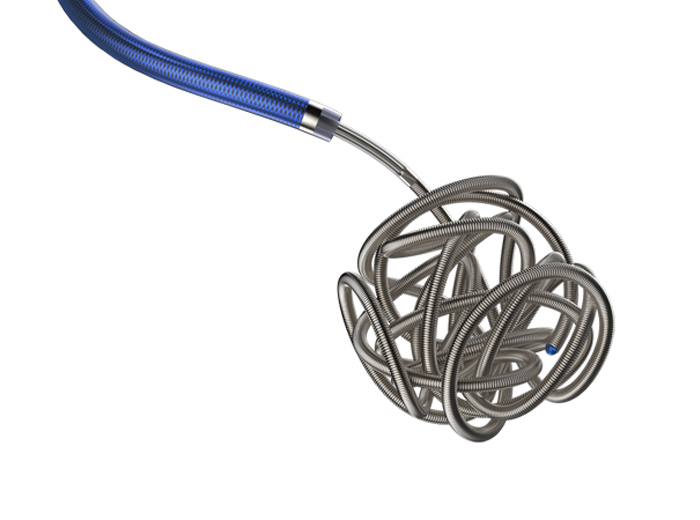the core of our corporate values
How Neurological Interventions Save Lives?
Neurological interventions, including neurovascular interventions and neurostimulation, have seen tremendous growth in recent years. Neurovascular interventions, such as mechanical thrombectomy and aneurysm coiling, now provide minimally invasive treatment options for stroke and aneurysms. Neurostimulation technologies like deep brain stimulation (DBS) and spinal cord stimulation (SCS) offer life-changing therapies for movement disorders and chronic pain.
The global neurological devices market was valued at $9.1 billion in 2020 and is expected to reach $18.4 billion by 2026. Technological advancements enable quicker diagnosis and treatment. Robust clinical evidence demonstrates improved outcomes and quality of life. Lastly, an aging population increases the prevalence of neurological disorders.
Overall, modern neurological interventions have revolutionized the treatment of major neurological conditions. Their ability to save and transform lives will only continue to grow in the coming decades. Patients around the world now have more hope and access to life-saving treatments.
Neurological Medical Devices Types
Neurovascular medical devices refer specifically to equipment used for minimally invasive treatment of neurological disorders, including embolic coils, carotid stents, intracranial stents, catheters, embolic protection devices, flow diverters, neuro thrombectomy devices, intravascular devices, balloon systems, stent retrievers, guidewires and other interventions.
For ischemic stroke intervention, devices include thrombectomy devices to retrieve clots, such as the Thrombite™ Clot Retriever Device, the Balloon Guiding Catheter (BGC), and aspiration catheters such as the Cylone™ Aspiration Catheter to remove clots. For hemorrhagic stroke, coil embolization is used to occlude aneurysms. Products include aneurysm coils and microcatheters.
For intracranial access, distal access catheters and microcatheters are used, exemplified by our company’s Distal Access Catheter and Glycine™ Microcatheter. To treat stenosis, balloon angioplasty devices are used, including our Intracranial PTA Balloon Catheter (Rx).
In summary, neurological medical devices for interventions span the treatment of ischemic stroke, hemorrhagic stroke, and intracranial access. Rapid progress has enabled advanced and minimally invasive solutions to improve outcomes for neurological patients. Overall, these medical devices provide life-saving and life-changing treatments for major brain and cerebrovascular conditions.
Neuro Interventions For Stroke
Neurointerventional technology brings hope for stroke treatment. It uses catheters to enter cerebral blood vessels and can effectively eliminate blood clots and repair ruptured aneurysms. Compared with craniotomy, neurointerventional technology has less trauma and lower risk of complications, and can restore cerebral blood flow more quickly. For patients who are ineffective with medication or have too high surgical risk, neurointerventional technology may be the best option.
Neurointerventional technology is mainly used to treat ischemic stroke and hemorrhagic stroke. For ischemic stroke, it can insert catheterized devices into obstructed cerebral arteries to remove or dissolve blood clots and restore blood flow. This can greatly reduce brain cell damage and neurological dysfunction. For hemorrhagic stroke, neurointerventional technology can deliver occlusive devices to occlude ruptured aneurysms, control bleeding and stabilize the condition.
Neurointerventional technology is developing rapidly and has become one of the main means of treating stroke in many major medical centers. It has saved countless lives of stroke patients and improved their quality of life. For stroke patients, timely use of neuro interventional techniques can achieve the best treatment effect. It undoubtedly brings hope for the treatment of stroke.
Neuro Interventions for Aneurysm Treatment
The most commonly used devices include coil embolization, flow diverters and intrasaccular flow disrupters.
Coil embolization is the most frequently used neurointerventional device for treating aneurysms. They are inserted into the aneurysm through a catheter to seal off the aneurysm from circulation and prevent rupture or re-bleeding. The coils remain permanently in the aneurysm and trigger a clotting reaction to occlude the aneurysm.
Flow diverters are densely braided stents placed across the neck of the aneurysm to disrupt blood flow into the aneurysm. They are often used for large or wide-necked aneurysms not suitable for coil embolization. The disrupted blood flow will trigger clotting and endothelial growth to occlude the aneurysm over time.
Intrasaccular flow disrupters are a new method for interventional treatment of aneurysms. They are placed inside the aneurysm to disrupt and slow down blood flow, prevent aneurysm rupture, and promote aneurysm thrombosis and occlusion. This treatment especially suitable for aneurysms unsuitable or untreatable by coil embolization and flow diverters.
Return










